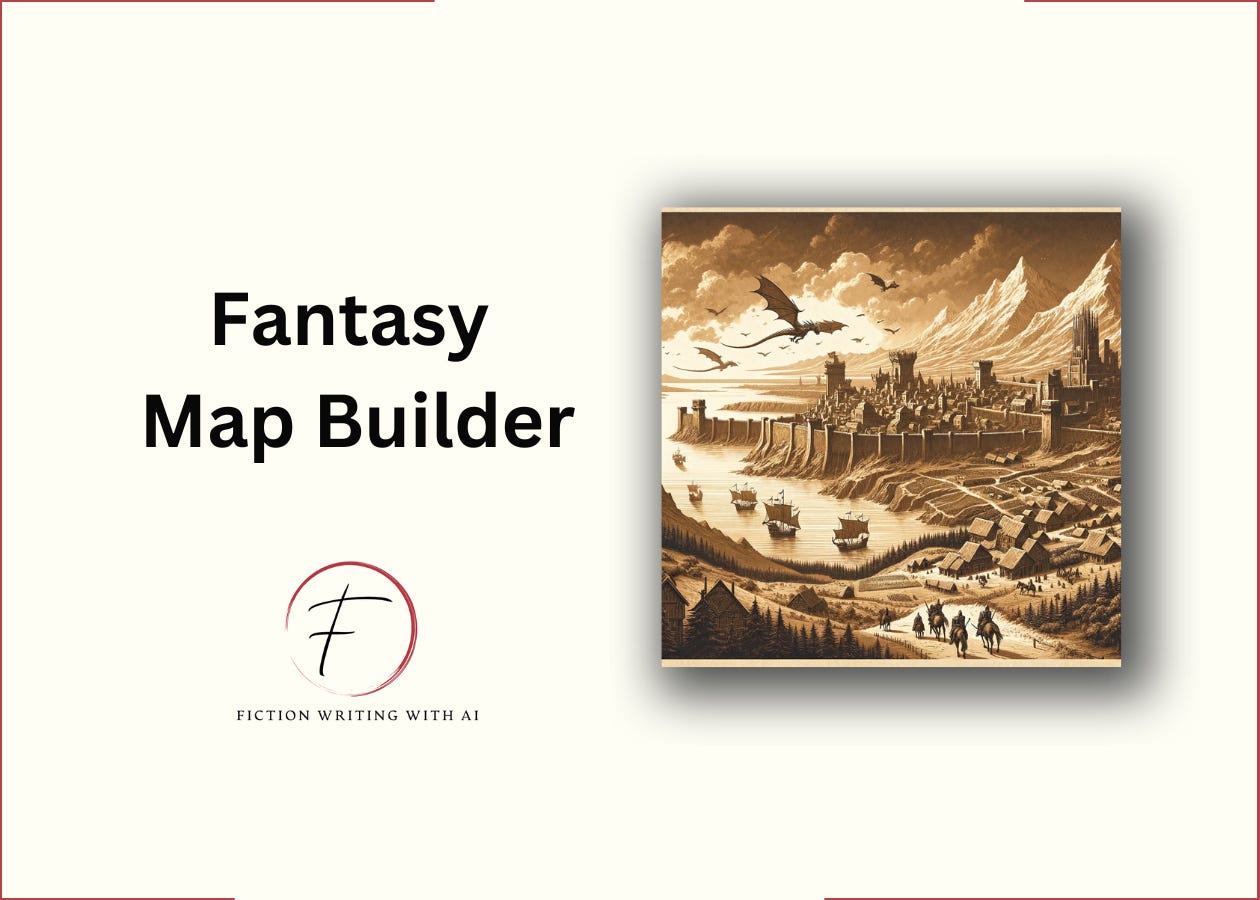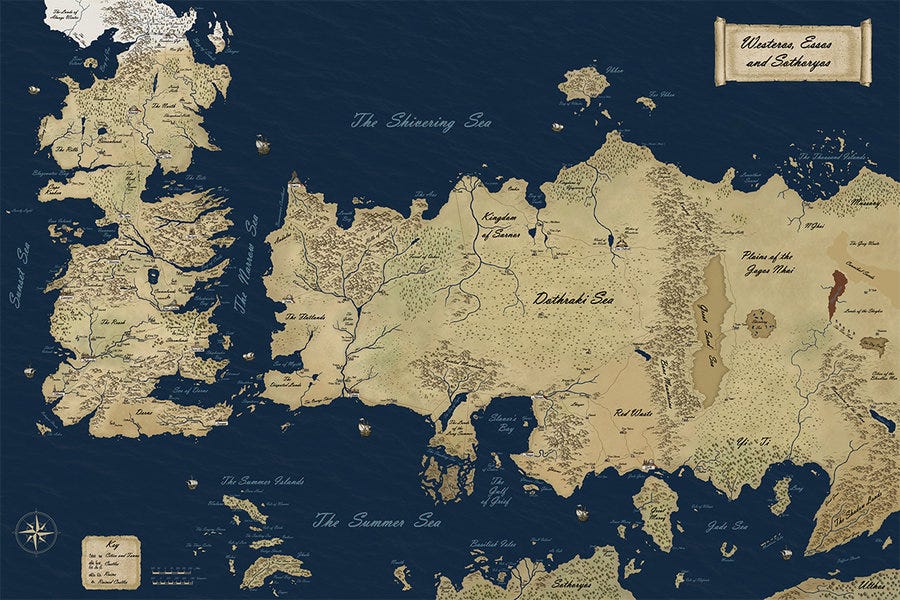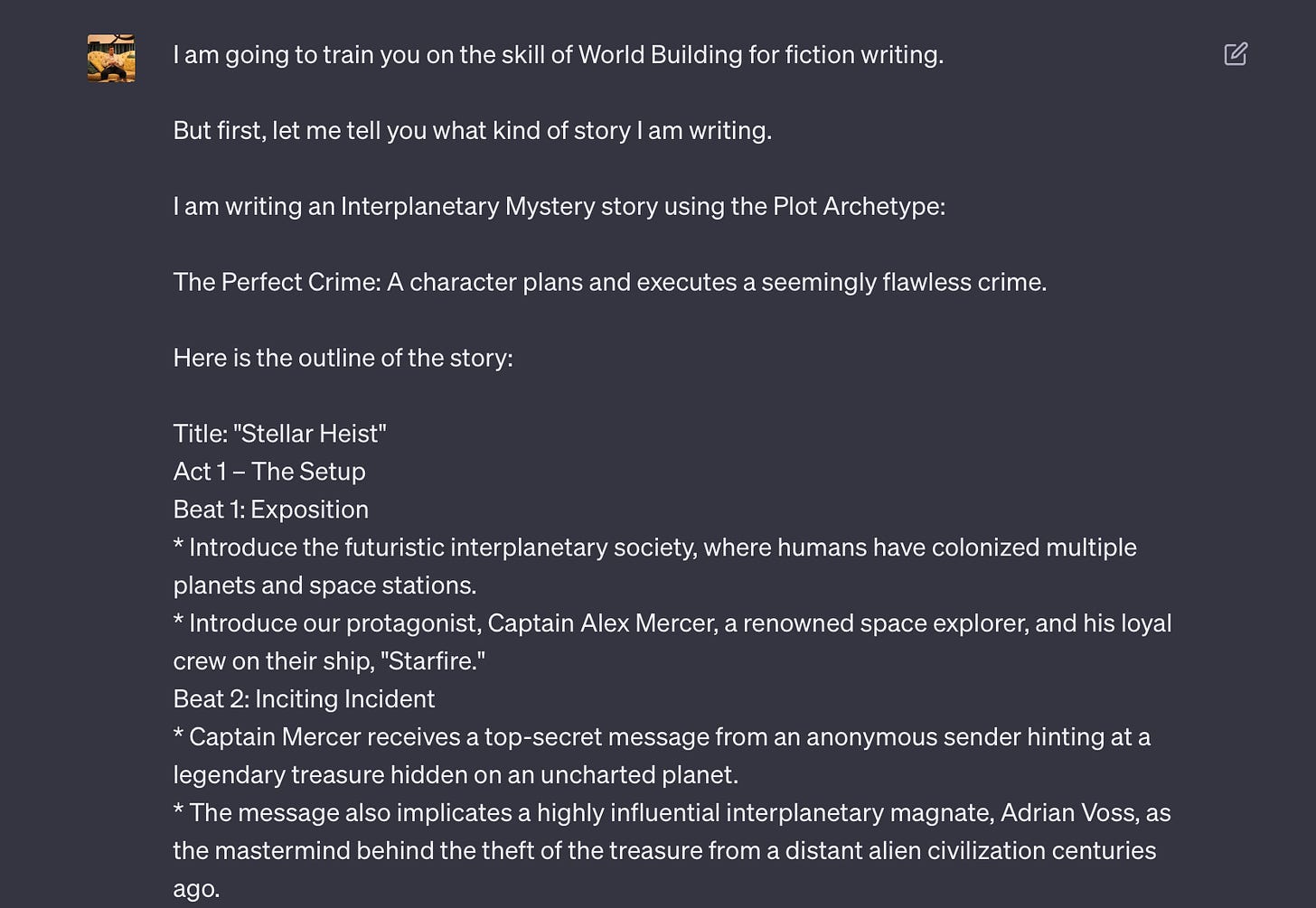World Building Like George R.R. Martin In 20 Minutes (Or Less)
Hey there!
Have you ever been so absorbed in a book that it felt like reality?
If so, you've experienced the power of “World Building.”
“World Building” usually involves doing some long-form writing & exploration around each character, each major setting, and each major plot point. And no one does it better than George R.R. Martin (GRRM), author of A Game of Thrones and and the A Song of Ice and Fire series.
Martin spent 20 years developing the history, cultures, religions, and geography of the fictional world of Westeros. That’s a serious investment. He treated Westeros like a real place, with a sense of history stretching back 12,000 years.
But if you don’t want to spend 20 years building your own version of Westeros, you can train ChatGPT to give you a hand.
Before we get to the prompts, let’s hear from “GRRM” on World Building.
The Art Of World Building: 3 Quick Tips From GRRM
Here’s how GRRM explains World Building:
"If you're writing about the real world or “the mundane world,” as a science fiction writer would say, you don't have to describe what an office looks like in detail. People know what an office looks like, or a living room, or so forth, or they know what you'll find in New York City or a farm in Kansas. But if you're dealing with totally made-up places, you can't do that without doing some world building in fantasy or science fiction to some extent."
For science fiction, Martin emphasizes the need for hyper-realism and attention to detail:
"If you're doing a novel, a science fiction novel, set on another planet, you have what I call the cardboard sets problem from Star Trek. You would want to compensate for that by adding more detail and making sure that you believe in this setting, and it isn't just a cardboard set behind some kind of an adventure."
He cites his own experience writing about Mars, where the availability of detailed satellite maps and images allowed him to create a world that was "real but empty, as spectacular as anything a fantasy novelist could make up."
1. Start With A Map
"The map comes before everything else."
Maps are crucial for grounding the world spatially, defining key locations and boundaries. They allow both the author and reader to visualize the world more concretely. Aspects like climate, resources, and terrain shape how civilizations develop and interact.
For example, the frozen lands beyond The Wall in Westeros bred hardy, rugged cultures dependent on hunting and survival skills. In contrast, the temperate, fertile Reach led to prosperous agricultural kingdoms with elaborate castles and social hierarchies.
But you don’t have to map everything.
Your world should leave room for the “call of the wild.”
Uncharted land
Ancient secrets
Unanswered questions
Let the reader speculate about what lies beyond the known boundaries.
This adds depth to your world, leaving room for future exploration.
You don’t have to explain everything.
2. Show, Don't Tell
One of the most common pitfalls in World Building is relying too heavily on info-dumps.
While providing context and background information is important, it's crucial to strike a balance and allow your readers to discover and experience the world organically. GRRM focuses on vivid description of the sights, sounds, smells, textures, and tastes that a character would experience within the world of Westeros and beyond. By engaging all five senses, he creates a multidimensional experience for the reader.
For example:
"The southern sky was aswirl with glowing, shifting colors, the reflections of the great fires that burned below. Baleful green tides moved across a moonless firmament, etching strange runes upon the night."
By showing rather than telling, you allow the reader to piece together the intricacies of your world through their own observations.
3. Embrace Contradiction (And Consistency)
One of the most effective techniques in world-building is embracing contradiction.
Just like our own world, fictional worlds should be multifaceted and riddled with contrasts and conflicts. Avoid painting your world in black and white terms. Explore the tensions and misunderstandings that arise when different cultures intersect.
Authenticity mirrors the nuances and uncertainty of our own existence.
But, it's equally important to maintain consistency.
Clearly define the rules that govern your world, whether it's the laws of magic, the workings of technology, or the societal norms. Once established, ensure that you consistently follow these rules throughout your narrative. When your consistent, it keeps readers from being distracted and you from leaving holes in the plot.
Pro Tip:
Maintain a comprehensive world bible or encyclopedia that documents all the key elements of your world, including geography, history, cultures, and character details.
Alright, with that foundation in place, let’s take a look at how we use AI to accelerate your World Building!
Train ChatGPT On World Building
Open a new window & re-train ChatGPT on your Sub-Genre, Plot Archetype, and 3-Act Outline
I am going to train you on the skill of World Building for fiction writing.
But first, let me tell you what kind of story I am writing.
I am writing a {Sub-Genre} story using the Plot Archetype:
{Plot Archetype}
Here is the outline of the story:
{Copy/Paste Outline}
Do you understand what type of story I am writing?
Are you ready to begin World Building with me?
Step 1: Name The World
Here’s the prompt:
Keep reading with a 7-day free trial
Subscribe to Fiction Writing With AI to keep reading this post and get 7 days of free access to the full post archives.






